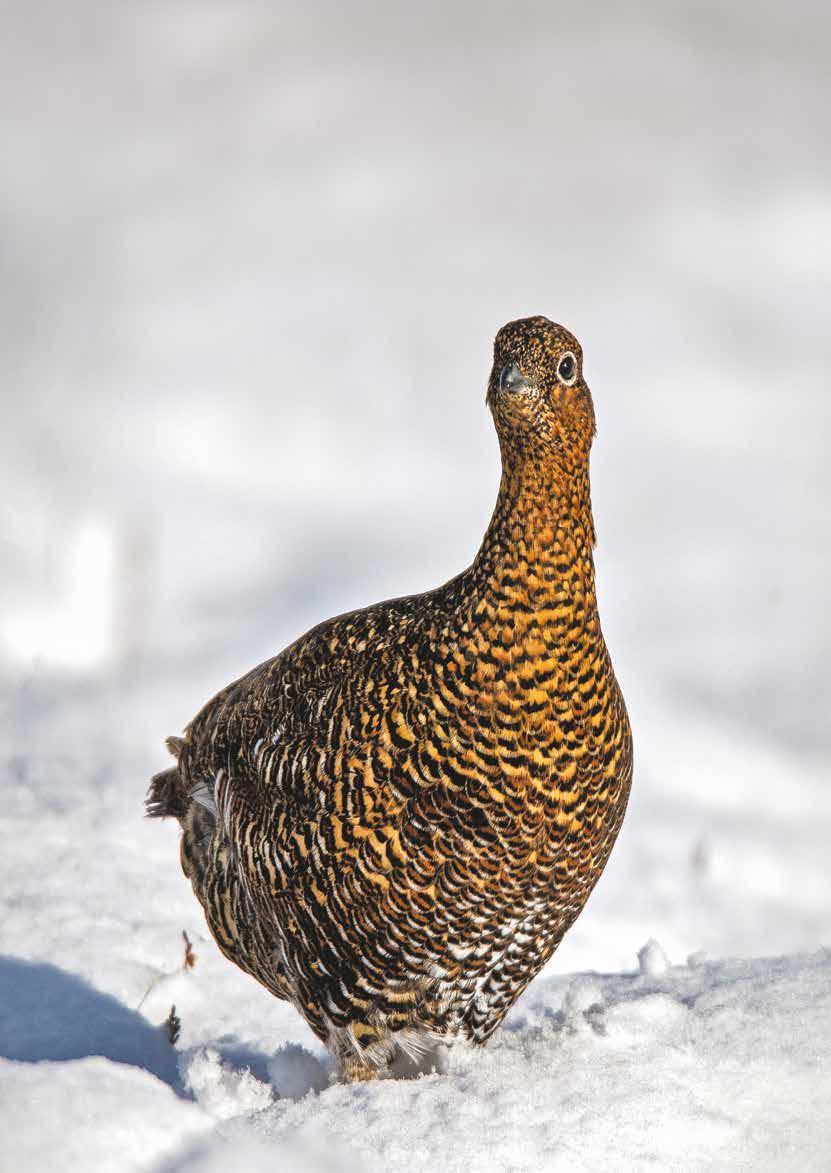
Winter 2022 The member magazine for Durham Wildlife Trust WWW.DURHAMWT.COM
instead of your printed copy, please email membership@durhamwt.co.uk with your name and membership number and we will update your preferences.
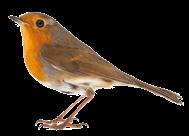
VISITOR CENTRES
Rainton Meadows Nature Reserve
Chilton Moor, Houghton-le-Spring, Tyne & Wear, DH4 6PU. Tel: 0191 584 3112
The Meadows Coffee Shop Angela Watson and Team. Tel: 0191 512 8940
Low Barns Nature Reserve
Witton-le-Wear, Bishop Auckland, County Durham, DL14 0AG. Tel: 01388 488 728
Low Barns Coffee Shop
Angela Watson and Team. Tel: 01388 488 729
Charity number: 501038
Paper: FSC accredited, 100% recycled uncoated Design: Edmundson Design www.edmundsondesign.com
WINTER ISSUE 2022
ellow is the word associated with autumn and winter – a time of stillness before the activity of spring. So far, this autumn has been far from mellow – chaotic would be my description. Hopefully, the stillness of winter will bring calm for both nature and the country at large.
As a charity, Durham Wildlife Trust has a duty to deliver its charitable objectives. Unfortunately, delivery of those objectives over recent weeks has clashed with the dramatic policy shifts of Government. Nature went from being something that was to be left in a better state for future generations, to a burden that was to be swept aside. There was an understandable reaction from the Wildlife Trusts, and everyone else who recognised that a push for short-term economic growth would cost us all dearly in the long run. These words are being written on the day that a new Prime Minister entered office. I am assuming it will be same one when the magazine gets published, and, by that time, their attitude towards the natural world should be known.
Hopefully, we can work with Government to deliver nature’s recovery; not have to oppose the destruction of what we currently have. Whichever scenario it is, the Trust’s members and supporters will be vital to deliver the action needed. I’m sure we would all rather be celebrating the Trust’s 50th nature reserve at Cuthbert’s Moor (see page 6), than having to Defend Nature (see page 5). I hope the Government feels the same way.

Jim Cokill Director
Printed by: North Wolds Printers
Cover Image: ‘Red Grouse’ by George Rockett
2 Wildlife Durham | Winter 2022
@durhamwildlife @durhamwildlife
Members Northumbrian Water Northern Gas Networks Vine House Farm
Members Wienerberger Partners ACM Environmental
Members
@durhamwildlifetrust Gold
Silver
Bronze
thanks to all our corporate members for their ongoing support
you would like to opt in to receiving a digital copy of
News
3
5 Conservation
6 Shop Winter
8
Nextdoor
10
12 Events
13
Simon Berry Optometrists Holidaycottages.co.uk Airedale Forestry Ltd Verdant Leisure Many
If
Wildlife Durham
A fungi forage with the Rangers
Government off target
Cuthbert’s Moor
Gifts
Campaigning
Nature
Projects Link Together
Member Events
National Winter Wildlife Gardening 14
A fungi forage with the Rangers

Nature and Young Rangers are practical volunteering groups for young people, aged from 11 to 18 years. Sessions run regularly at Rainton Meadows and Low Barns Nature Reserves and offer participants the chance to gain some hands-on experience of managing a nature reserve and recording the wildlife. Activities include things like brush cutting, grass cutting and raking, litter picking, surveying and learning species identification skills.
This autumn, the groups at Low Barns went on a fungi forage under the guidance of one of the Trust’s expert education leaders, Jodie Morgan, who commented: “Amazingly, we found a total of 42 species of fungi during the forage, which was incredible! The species we spotted included a wood blewit, green elf cups, and honey fungus.

It was wonderful to see the young members of our group so enthusiastic about this classic sign of autumn in wildlife and to have the opportunity to pass on some of my top tips for identification.
“We are keen to see more members join our Rangers groups. The volunteering hours can count towards a Duke of Edinburgh Award and go down as work experience on curriculum vitae documents. Not only that, the young people are making friends, helping to do their bit for the environment and gaining invaluable experience if they wish to pursue a career in conservation.”
To find out more about our Rangers groups or book onto a session, visit durhamwt.com/events
Low Barns reedbed boardwalk out of action
As regular visitors to Low Barns will be aware, we unfortunately had to close the reedbed boardwalk in summer 2022. Over the years we have performed ongoing maintenance to ensure it is safe for visitors and events but, following an inspection, we have regrettably concluded that the boardwalk is no longer fit for purpose or cost effective to repair.

Phill Catton, Conservation Manager, said: “We know that the boardwalk is popular with visitors to Low Barns, and it’s also an important part of school visits to the site, when it is used as a pond dipping platform. We’re busy exploring options to replace the boardwalk and re-open public access to the reedbed. We hope to have the work
completed before spring 2023, but if funding delays or contractor availability makes that impossible, the work will have to be carried out in autumn 2023 to avoid disturbing nesting birds. Any donations to help us with this project would be gratefully received.”
Donations can be made online at durhamwt.com/donate or by calling 0191 584 3112.
For updates on all of our reserves, visit: durhamwt.com/visit
Wildlife Durham | Winter 2022 3
NEWS
Add your support to Bring Back Wild Play
Many of the younger visitors to Rainton Meadows will have noticed that, unfortunately, the Wild Play area has been shut since July. The play area had to be closed for safety reasons due to rot in some of the timbers.

The Wild Play area is well-loved and widely used by families visiting the site, and provides a fun environment for outdoor play. It has been a great disappointment that it has not been available for everyone to enjoy.
To bring back Wild Play, the Trust needs to raise £13,668 – enough to replace the large climbing frame and create a new and improved play area. In September, a crowdfunding
Nature’s seasonal news
By Phill Catton Conservation Manager
fter the emergence of life in spring and the vibrancy and urgency of summer, autumn and winter can seem like poor relations in comparison to those showier seasons. However, after a sweltering summer, the cooler and wetter weather is not only much needed to recharge our wetland habitats and sate our soils, but has its own charms and spectacles. After the competitiveness of breeding season, many birds now flock together forming spectacles as they swirl around before alighting on a site to feed or roost. Look out for starling murmurations over reedbeds at Low Barns, or large gatherings of lapwings descending onto muddy margins at Shibdon Pond and Rainton Meadows. Trees and hedgerows heavy with forage are nature’s pantry, but as the remaining fruits ripen beyond their best, and nuts are harvested and cached, the foliage takes centre stage, injecting colour into a desaturated landscape, before quilting the ground under a leafy blanket.
campaign was launched to gather local support and donations towards the cost.
Anne Gladwin, Grants Officer, said: “We have had a fantastic response to our appeal, and this generosity shows ‘match’ funders that the local community really wants Wild Play to reopen. But we’re not quite there yet, so please keep your support coming in. Whatever you are able to donate really makes a difference.”
It is hoped that by the end of December there will be confirmation about the match funding, and work can start in January to prepare the play area to reopen in spring 2023.
To support the campaign, visit: durhamwt.com/wildplay
Autumn and winter are also busy times for the reserves team. The usual meadow cutting, scrub control, and woodland thinning is undertaken, safely after breeding season, as are other projects like meadow restoration, tree planting, and hedge laying. It’s also the ideal time to carry out general maintenance on footpaths, signage, boardwalks and the like.
If you would like to get involved, then look for opportunities on our volunteering web page: www.durhamwt.com/volunteer
Our volunteers are incredible, and central to everything that we do. While all deserve a huge shout out, we would like to give special mention to Chris Cox who has been undertaking breeding bird surveys on behalf of the Trust at Milkwellburn Wood for twelve years. Unfortunately for us, Chris is now hanging up his bins, but his legacy is an incredible body of reports and data providing a comprehensive picture of the avifauna in the woodland. Thank you ever so much, Chris, for your time and commitment.

4 Wildlife Durham | Winter 2022 NEWS
A
The Queen Government off target
In 2020, the UK Government committed to protecting at least 30% of land and sea for nature by 2030 – its 30x30 target. Two years on, nature campaigners are warning that little progress has been made towards this promise.
The 2022 Progress Report on 30x30 in England, published by Wildlife and Countryside Link, revealed that just 3.22% of England’s land and 8% of the sea was effectively protected by 2022. This is only a 0.22% increase on the amount of land protected in 2021. Much greater progress is needed if the Government is to keep to the commitment of 30x30, yet plans for deregulation have risked sliding backwards.
Within weeks of Liz Truss becoming the UK’s Prime Minister, the UK Government made a string of announcements that threatened nature. This included a new bill that would allow them to reform and revoke hundreds of laws with their origins in EU policy, including many of our environmental regulations. Government also announced new investment zones, which could pave the way for developers to concrete over some of our most important wildlife sites.
The 2022 Progress Report argues that we need “designation, not deregulation”. Although Liz Truss’s term as Prime Minister has ended, it is essential that the UK Government returns to its commitment of protecting more land for nature, rather than continuing Truss’s attack on it.
Queen Elizabeth II was celebrated for her passion for the outdoors, the countryside and rural life, lending her support to the work of The Wildlife Trusts and many environmental charities over the years. The Wildlife Trusts are proud to have been a part of Coronation Meadows — an inspirational idea to mark the 60th anniversary of The Queen’s Coronation in 2013. These meadows will stand as a lasting natural legacy.
Eyecott Hill, Cumbria
Meadows at Cumbria Wildlife Trust’s Eycott Hill nature reserve were brought to life with traditional Cumbrian hay meadow flowers and grasses. The restored meadows have provided inspiration for a textile arts project for adults with learning disabilities and older people with dementia.
Fir Grove, Norfolk
Roadside verges hold some of the last fragments of Norfolk’s flower-rich meadows, providing a seed base to create farmland meadows once more. Norfolk Wildlife Trust volunteers helped harvest green hay from a roadside nature reserve to create the seven acre Coronation Meadow at Fir Grove.
Crisis calculations
The Wildlife Trusts have published a groundbreaking report examining the projected impacts of climate change on our nature reserves. It assesses the risks of a changing climate and what we need to do to help nature adapt. The report shows that extreme weather is already affecting many nature reserves through wildfires, flooding, and drought. Research finds that by the 2050s, half of our nature reserves will have 30+ days of very high fire risk a year, and 55% will see nearby river flows drop by more than 30% during times of low flow. The report also shares innovative Wildlife Trust projects that aim to reduce the impacts on wildlife. Read the report at wtru.st/changing-nature
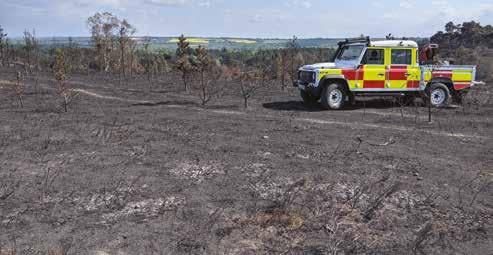
Hannah’s Meadow, Durham
Two species-rich unimproved upland hay meadows and a grazing pasture in a traditional farming landscape. Once owned and farmed by Hannah Hauxwell and now a Site of Special Scientific Interest, the meadows are considered to be some of the most species-rich in upland Durham.
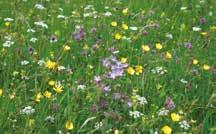
Wildlife Durham | Winter 2022 5
NATIONAL
You can help defend nature. Find out how: durhamwt.com/defend-nature
SCORCHED RESERVE © ADAM BOULTON SURREY WILDLIFE TRUST. HANNAH’S MEADOW
©WWW.MARCUSBYRON.CO.UK
Wildfires are becoming more common due to climate change
REMEMBERING HER MAJESTY
Cuthbert’s Moor
Cuthbert’s Moor is a substantial new acquisition for Durham Wildlife Trust. At just more than 120 hectares, it is a small but impressive piece of the much wider North Pennines upland moorland habitats. It is one of the Teesdale Allotments, Sites of Special Scientific Interest (SSSI) that have the highest densities of breeding wader populations in the uplands of England. The moor, known previously as Horden Allotment, lies to the north east of Middleton-in-Teesdale and was managed as a grouse moor by a private syndicate from 2006. This included conventional grouse moor management techniques alongside traditional sheep grazing.
The habitats on Cuthbert’s Moor are representative of the wider Teesdale Allotments, with a range of upland vegetation types that include wet acid pasture, mire, and upland heather communities. Around one-sixth of the reserve is wet heath and peatland habitat, containing sphagnum mosses, bilberry, heathers, and cotton grasses. The steep eastward-facing slopes are characterised by a drier heath community of ling, bilberry, and matgrass. The result is a mosaic of heath and grassland habitats. A series of sikes (small streams) run from the moor, eventually joining the Eggleston Burn, a tributary of the River Tees.
The mix of heath and grassland habitats across the reserve supports upland waders, including lapwing, snipe, redshank, curlew, and golden plover, together with short-eared owl, and both red and black grouse.

6 Wildlife Durham | Winter 2022 CONSERVATION
Teesdale has some of the highest densities of breeding waders found anywhere in the UK. These species, for example the lapwing and curlew, nest on the ground and tend to favour areas with short vegetation. Cuthbert’s moor is designated as a Site of Special Scientific Interest because of its importance for waders and other upland breeding birds, such as the black grouse.
Lapwing
The lapwing was once a widespread breeding bird across lowland and upland areas, but changes to farming have dramatically reduced the numbers of breeding lapwing in lowland areas. Across England, lapwing numbers have declined by 80% since 1960.

Lapwings return to the uplands in spring and are easily recognised by their distinctive crest, broad rounded wings and peewit call.

Black grouse
Once widespread across the UK, the black grouse’s range has contracted significantly since the late nineteenth century. Now only found in any numbers in Scotland and North East England, with Teesdale a particular stronghold.
The male black grouse is known as a blackcock and cannot be mistaken for any other species. The more soberly dressed female is known as the grey hen.
Curlew

The curlew is another bird that has suffered a dramatic decline in numbers over recent years. Across the UK, breeding curlew numbers have fallen by 48% since 1995. A statistic that is even more stark given that the UK holds 28% of the European population.
The eerie, ‘cur-lee’ call of the curlew is an iconic sound of the uplands from the spring until the birds disperse to the lowlands and coasts to over winter. The Trust’s Great North Fen project will also benefit the curlew by increasing the area of suitable winter habitat.
The Trust will be unlocking the full biodiversity potential of Cuthbert’s Moor and implementing important plans for nature’s recovery. Initially, the Trust is focusing on understanding the ecology of this site in greater detail, with survey work due to begin in spring 2023. Specialists will complete a series of baseline surveys of the flora and fauna, but the intention is to take a citizen science approach to ongoing monitoring, and we hope our supporters will join us to survey wildlife on-site. There is also maintenance work to deliver, with some fences and walls in need of repair. Plenty for the volunteer teams to get their teeth into. In addition, there is some potential for peat restoration as part of the long-term management of habitats on site. Cuthbert’s Moor is a site that is truly representative of the climate and nature crisis, with habitats that store carbon and support populations of species that are
declining rapidly. Restoration work will, therefore, allow nature to generate benefits for our climate, and the Trust can use Cuthbert’s Moor to create a wider understanding of the importance of the natural world.

Visit:
Cuthbert’s Moor is an extremely sensitive site because of the ground-nesting birds. Durham Wildlife Trust will be organising special visits for members to experience this beautiful upland environment. See page 13 for details or visit durhamwt.com/events
What to see:
Lapwing, snipe, redshank, curlew, golden plover, short-eared owl, red and black grouse, common lizard.
Wildlife Durham | Winter 2022 7 CONSERVATION
Mark Hamblin/2020VISION
Gwynneth Heeley
Hamish Paterson
Winter Gifts
Our Durham Wildlife Trust shop is home to a range of high quality, hand-picked, nature-themed gifts, homewares, and guides, to make everyone’s lives a little bit wilder. View our favourites here or shop the full range online at durhamwt.com/shop
Wildlife Trust Calendar
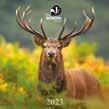
Our hugely popular eco calendar is back for 2023, with 13 months of wild to brighten up your home. This year the calendars are un-bagged, so, not only are they greener, but they cost less, and we’re passing that saving on to you. £8.99
Wildlife Trust Notelets

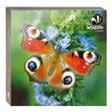

Wildlife Trust Christmas Cards Small & Large

Made in Great Britain by the eco-friendly card company, our mixed packs of Christmas cards feature some of our favourite birds and mammals in the snow. Packs of 10 (2 each of 5 designs) inc. envelopes; small pack (inc. hare) 120mm x 120mm £4.50, large pack (inc. squirrel) 153mm x 153mm £5.50.


Durham Wildlife Trust Reusable Cup
Our Durham Wildlife Trust logo drinks mugs are made from recycled single-use paper cups, and designed for 5 years’ use. They are 100% recyclable at the end of their life, insulated to keep your hands protected and your drink warm, with a durable snap-fit lid. They are BPA & melamine free, holding 12oz / 340ml and 150mm tall (with lid). Available in black, mint and coral. £8.50
These wildlife notecard wallet packs are eco greetings cards suitable for all the year round. Each pack contains 8 cards, (2 each of 4 designs) and are 120mm x 120mm. Choose from British mammals, insects or birds, in a handy wallet. Also a great gift. £4.99
Concise Wildlife Guides
Our beautifully illustrated concise guides are packed with information on the wildlife that can be found in Britain and the near Continent. Choose from birds, trees, insects, foraging, wildflowers, and more! Each guide covers hundreds of species, all of which are illustrated with superb full-colour artworks. A concise written account covering size, description, distribution and habits appears on the same page as the illustration for each species. The easy-to-follow layouts and superb artworks aid quick and accurate identification, and make these books an invaluable reference, outdoors as well as at home. £6.99
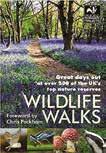
TWT Wildlife Walks
Wildlife Walks is the only guide you’ll need to plan a great day out for both nature lovers and families, throughout the year. This superb guide comprehensively covers more than 500 of the UK’s top Wildlife Trust nature reserves. Each entry includes information on access/conditions, opening times, facilities, how to get there, and local attractions. £14.99
8 Wildlife Durham | Winter 2022 SHOP
World’s Best Bug Box
The world’s best bug viewer is a cylindrical tub for catching insects and other specimens, with a 2x magnification lid and an extra, adaptable magnifying glass attachment to take it to 4x magnification. 7.00 x 8.00 x 7.00 cm. £5.75

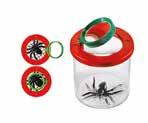
Microscope and telescope

The Pocket Telescope and Microscope combines two scientific instruments in one! Use the whole pen unit as a telescope to view distant objects at 8X magnification. To take a closer look at bugs and objects, remove the end to reveal a mini microscope boosting to 30X magnification. The Pocket Telescope and Microscope measures 15cm in length and includes a metal pocket clip. £7.99

Durham Wildlife Trust Beanie Hats & Caps

Embroidered with the Durham Wildlife Trust logo, our hats and caps are the perfect way to show your support, while keeping your head covered. Beanie hats available in black, green and navy, at £9.50 Caps available in black and navy at £11.40.
i-SPY Books
Beat the boredom and take time out from screens with this pocket-sized book packed with facts, photos and fantastic spots for hours of fun! Choose from a range of wild topics. £3.99
Living Nature Mini Buddy
This gorgeous assortment of plush Wildlife Mini Buddies by Living Nature is sure to bring a smile to any little-one’s face! Collect all 6. Assortment includes fox, owl, rabbit, duck, hedgehog and squirrel. 5.00 x 6.00 x 10.00 cm. £4.00

Fly Eyes Specs

Get a bug’s eye view of life! Wear these funny novelty glasses to view the world just as a fly does, you’ll be amazed at how little you can see! 3.50 x 15.50 x 19.00 cm. £4.99
Living Nature Fox

This large fox soft toy is a stunning plush animal created by Living Nature. With gorgeous attention to detail, including a smooth red coat, white tummy, brown ears and paws, and a white tip at the end of its tail, this striking soft toy is a wonderful gift for wildlife lovers. 12.00 x 24.00 x 42.00 cm. £34.99
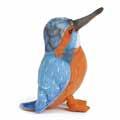
Living Nature Kingfisher
Brighten up your child’s imagination with this colourful kingfisher soft toy! Made with premium quality blue and bright orange materials, this gorgeous soft toy is a thoughtful gift for nature lovers. 9.00 x 8.00 x 19.00 cm. £14.75
How to order
Online

Head to our website to order through our online shop. Opt to ‘Click & Collect’ from Rainton Meadows or Low Barns for free, or select your post method at checkout.
In-store
Visit Rainton Meadows Nature Reserve and Low Barns Nature Reserve to browse our ranges in-store. Low Barns has a smaller selection, due to available space, but all of the above items are in stock at the time of print. Both shops are open, with the visitor centres, 10am-4pm each day (excluding Christmas Bank Holidays).
Telephone
Call our office on 0191 584 3112 (Monday-Friday, 9am-5pm) to place an order over the telephone with our team.
Please note that Monday 19th December will be our last day for Christmas orders. Every effort will be made to prepare and send orders after this date, but due to Christmas post they may not arrive in time for Christmas.
Wildlife Durham | Winter 2022 9 SHOP
By Tom Parkin
Communities working together for people and for nature




The Nextdoor Nature project is underway! Durham Wildlife Trust is bringing communities together to help nature flourish where they live and work. Now into its third month since roll-out, there’s been incredibly encouraging uptake and enthusiasm from the communities Nextdoor Nature will be working with to restore nature.
The need for individual action to help defend nature, and support its recovery, has never been more pertinent. We know that nature on our doorsteps is not only good for our physical and mental health, but it also helps connect us better with one another. With more people actively playing a part, we will see nature restored in our urban spaces, and build stronger, more resilient communities.
Nextdoor Nature, funded by the National Lottery Heritage Fund, is operating across target areas in Sunderland, South Tyneside, East Durham, and Darlington. The aim is to create a network of community-led projects that bring nature into those neighbourhoods, giving everyone an opportunity to enjoy wildlife.
I have been making connections with local people, identifying current and future green champions, and listening to ideas from residents about their local urban spaces. My role is to offer individuals and groups the support, advice and expertise needed for delivery of their own project. I want to be able to help people spend time in nature, and equip them with the skills they need to look after their Nextdoor Nature. The legacy will be a positive impact on people’s lives and, of course, nature’s recovery.

10 Wildlife Durham | Winter 2022 CAMPAIGNING
Brinkburn
Amazing direct action taken by Brinkburn Community Volunteers has seen residents working to restore a muchloved local pond, where high nutrient levels are damaging wildlife value. Local residents have met weekly, and put in hours of work, to clear duckweed from the surface of the pond, with incredible results. They have removed litter from the site to restore this natural space as a place for wildlife to thrive, that residents can enjoy.
This direct community-led action is a brilliant template for Nextdoor Nature, with the Trust’s expertise helping to guide the work of the volunteers. The Trust has also helped liaise with Darlington Council, and accessed funding, to support more community action.
Hendon
In Hendon, Sunderland, we have been working with ‘Back on the Map’, and local residents, to transform an unused plot of land into an accessible Community Growing Garden. After discussion with residents and community consultation meetings, we are building up a joint plan on how to make best use of the space for people and wildlife.

All guided by community voices, it is incredibly exciting to see what will become of this space over the next two years.
Nextdoor Nature is bringing communities together to help nature flourish where they live and work! Thanks to £5 million funding from The National Lottery Heritage Fund, Nextdoor Nature will provide people with the advice and support they need to help nature on their doorstep, and leave a lasting natural legacy marking The Queen’s Platinum Jubilee.
Participating Areas
• Don’t have a garden and need a natural space to come and relax after work?
• Growing plots just down the road to grow and pick fresh fruit and veg?
• Join neighbours for a chat and make some food, surrounded by wildlife?
Get involved
Would your community like to make space for nature and people? Start your own project to connect your neighbours with wildlife and each other. Here’s how to get in touch: durhamwt.com/nextdoor-nature Tom Parkin


Nextdoor Nature Officer, Durham Wildlife Trust: tparkin@durhamwt.co.uk | 01915843112

SUNDERLAND WASHINGTON
DARLINGTON
SOUTH SHIELDS
PETERLEE
Wildlife Durham | Winter 2022 11 CAMPAIGNING
Link Together
By Anne Gladwin Link Together Project Manager

Durham Wildlife Trust’s vision is of a thriving natural world, with wildlife and natural habitats playing a valued role in addressing the climate and ecological emergencies, inspiring communities to get involved in nature’s recovery. The Trust is firmly rooted in our local communities, looking after wild places, increasing people’s understanding of, and connection to, the natural world, and promoting the significant role nature can play in keeping people healthy. Link Together is a new project, based in the Sunderland Coalfields, which brings all these elements together.
The Trust will be working in partnership with Sunderland City Council and Wear Rivers Trust to deliver significant nature restoration and access improvements across 13 council-owned sites. The project will create a vibrant wildlife-rich network, and local communities from across the Coalfields will be encouraged to get involved, through volunteering, learning, and training. Visiting, using and caring for their local greenspace to create benefits for nature and themselves.
Funding to develop the first phase of Link Together has been secured with a grant of £149,462 from the National Lottery Heritage Fund (NLHF), and £20,000 match funding from Sunderland Council via the Coalfield Area Committee. The newly appointed Project Manager, Anne Gladwin, will be working with various partners and communities across Copt Hill, Shiney Row, Houghton-le-Spring, and Hetton-le-Hole, to develop, then submit, a second-stage application to the NLHF at the end of 2023. The project delivery stage will then start in 2024 and last for two years.



Link Together will deliver a significant programme of habitat management on greenspaces close to where people live. The sites vary in size and character, including nature reserves, parks, woodlands, watercourses, and
the former Elemore Golf Course. The work will restore priority habitats such as broadleaf woodlands, acid and magnesian limestone grasslands, meadows, fens, streams, and ponds, as well as creating new habitats with woodland planting and pond creation. New signage, footpaths and information will help to make sites feel more welcoming and accessible, and encourage more people to enjoy them.
Read more about some of the sites included in Link Together: Hetton Bogs is a wonderful place - designated as a Site of Special Scientific Interest (SSSI), with lowland fen and semi-natural broadleaf woodland. A place to see kingfisher and, perhaps, greenshank.
Former Elemore Golf Course’s vast areas of grassland will be transformed with woodland planting, new wetland scrapes and ponds. New pathways will create links to other greenspaces, and the site will be a fantastic community resource for enjoying and accessing nature.

Flint Mill is a large greenspace on the Moors Burn, with areas of woodland and grassland. Additional woodland and hedge planting, and improved grassland management, will create a valuable wildlife stepping-stone from adjacent housing to the wider countryside.
The Coalfield communities will be at the heart of Link Together. New opportunities to connect with nature will be developed through social prescribing, volunteering, training programmes and education, so that everyone can build nature into their daily lives, and reap the rewards by feeling healthier and happier.
Find out more and get involved: durhamwt.com/link-together
12 Wildlife Durham | Winter 2022
PROJECTS
Member Events
Members’ Tour of Bishop’s Fen
Saturday 10th December, 9.30am for a 10am departure
Minibus will depart from Rainton Meadows Nature Reserve
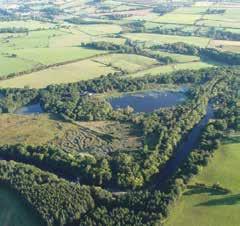
Trust Director, Jim Cokill along with Conservation Manager, Phill Catton will lead members around the Trust’s new Bishop’s Fen Nature Reserve. Come along to learn about the Trust’s management of the site’s restoration to-date and hear about the ambitious Great North Fen vision. Moderate walk and uneven terrain.
Festive Late Night Shopping
Rainton Meadows Gift Shop
Tuesday 13th December, 5pm - 8pm
Come along to the Durham Wildlife Trust Gift Shop at Rainton Meadows Nature Reserve and join our shop volunteers for a festive mince pie and browse our wild range. There will be a variety of special offers on the night, perfect for gifting wild!
Winter Wading Birds at Rainton Meadows
Rainton Meadows Nature Reserve
Saturday 21st January, 9am - 11.30am
Durham Wildlife Trust Conservation Manager and keen birder, Phill Catton, will lead a morning wading bird walk around Rainton Meadows. Including a visit to the hide, where there will be scopes available, Phill will guide you through the visiting and resident bird species that can be seen on site, along with information about how the Trust manages Rainton Meadows to benefit wading birds. Tea and coffee will be available in the visitor centre from 9am, please bring your reusable cup for this. The walk will begin at 9.30am. Limited places available, please book.
Low Barns – New Members’ Morning
Low Barns Nature Reserve
Saturday 11th February, 10am - 11.30am
Join members of our team, including Trust Director, Jim Cokill, for a guided walk around Low Barns. Find out more about Durham Wildlife Trust, the history of the reserve, and gain an insight into the Trust’s future plans. The walk will begin at 10am and will involve a 45-60 minute circular route. Although pitched as introductory, all members are welcome and encouraged to attend new members’ events. Please wear suitable clothing including sturdy footwear. Tea and coffee will be available in the visitor centre from 9.30am, please bring your reusable cup for this. The walk will begin at 10am. Limited places available, please book.
Members’ Tour of Cuthbert’s Moor
Saturday 11th March, 9.30am for a 10am departure
Minibus will depart from Low Barns Nature Reserve
Cuthbert’s Moor is a significant new nature reserve for Durham Wildlife Trust. A challenging hike in parts, Head of Conservation Mark Dinning and Conservation Manager Phill Catton will introduce members to Cuthbert’s Moor, discuss the importance of this acquisition to the Trust and highlight how changing the site’s management will benefit key species. Extensive walk and difficult terrain.
Spring Equinox – Signs of Spring Guided Walk
Low Barns Nature Reserve Monday 20th March, 9.30am - 11.30am
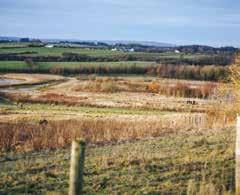
Join us on the first day of spring when Head of Conservation, Mark Dinning, will guide members around Low Barns Nature Reserve for a special Spring Equinox walk, identifying the signs of spring from the ground up. Tea and coffee will be available in the visitor centre from 9.30am, please bring your reusable cup for this. The walk will begin at 10am. Limited places available, please book.
Rainton Meadows Nature Reserve – New Members’ Morning
Rainton Meadows Nature Reserve
Saturday 18th March, 10am - 11.30am
Join members of our team, including Trust Director, Jim Cokill, for a guided walk around Rainton Meadows. Find out more about Durham Wildlife Trust, the history of the reserve, and gain an insight into the Trust's future plans. The walk will begin at 10am and will involve a 45-60 minute circular route. Although pitched as introductory, all members are welcome and encouraged to attend new members’ events. Please wear suitable clothing including sturdy footwear. Tea and coffee will be available in the visitor centre from 9.30am, please bring your reusable cup for this. The walk will begin at 10am. Limited places available, please book.
Wildlife Durham | Winter 2022 13 EVENTS
Winter Wildlife Gardening
Our gardens all but go to sleep in winter, as plants become dormant and most species are overwintering, but there are still ways to help your garden wildlife.
Hedgehogs and amphibians may be tucked beneath a large pile of leaves or in your compost heap, while insects may be sheltering beneath tree bark, in the folds of spent leaves and
seedheads, or amongst leaf litter. Avoid disturbing these habitats until mid-spring as any interruptions could cost valuable energy that isn’t easy to replenish at this time of year; insects may also be vulnerable to fungal diseases if exposed to damp conditions.
Kate Bradbury is passionate about wildlifefriendly gardening and the author of Wildlife Gardening for Everyone and Everything in association with The Wildlife Trusts.


Indeed, the best thing you can do for most wildlife at this time of year is to not garden at all! Leave plants in borders to rot down into themselves, avoid clearing leaf litter from your garden’s edges (but do sweep leaves off paths and the lawn), and leave habitats such as log piles and compost heaps intact. If you have a meadow or other area of long grass, leave a ‘buffer zone’ uncut throughout winter, so caterpillars, beetles and other invertebrates can shelter in the thatch.
Of course, not all animals hibernate. Birds battle through the short days and cold nights, searching for food that’s often hard to come by. If you have fruit trees, like crab apples, let windfall fruit remain on
14 Wildlife Durham | Winter 2022 NATIONAL
BY HANNAH BAILEY, PHOTO © SARAH CUTTLE
ILLUSTRATION
the ground so thrushes such as redwings and fieldfares can help themselves. If the ground isn’t frozen, you can add to your collection of fruit and berrying trees. Now’s the time to buy bare-root trees and shrubs — hawthorn, rowan, holly, apples, crab apples, and pyracantha all produce fruit loved by birds, while birches and alder, along with plants such as Verbena bonariensis, lavender and teasels, offer seeds for a wide range of smaller species. Filling supplementary feeders benefits smaller species like tits, which need to feed almost constantly in the daylight hours. Calorie-rich food such as fat balls, sunflower hearts and peanuts gives them the energy they need to shiver to keep warm at night. Leave scraps of seed at the back of borders for ground-feeding species like wrens. And don’t forget water — not only do bird baths provide drinking water,
but by regularly topping up your bird bath you will also help birds to clean their feathers and regulate their temperature, vital on cold winter nights.
Do make sure you keep bird baths and feeders clean, as the number and variety of birds visiting them can spread diseases. Regular cleaning can help keep your garden birds healthy.
Get more wildlife-friendly gardening tips at wildlifetrusts.org/gardening

Wildlife Durham | Winter 2022 15
RESTORING THE DURHAM CARRS FUNDRAISING APPEAL



From this...
...to this. With your support
The Durham Carrs are a relic from the last ice age – a complex of wetlands fed by the River Skerne as it descended from the limestone escarpment in the east of County Durham. Those habitats, and the species they supported, are now almost entirely gone. But Durham Wildlife Trust has a vision to restore them as part of ‘The Great North Fen’. The Trust is seeking the support of its members to complete that vision.
In the last issue of Wildlife Durham, we asked for help to raise £20,000, so we can access money from the Landfill Communities Fund. To date, we’ve raised £18700 - a magnificent total – and the Trust would like to thank all those who have donated to the appeal. Find out more and add your donation here: durhamwt.com/restoring-durham-carrs
Durham
Carrs fundraising appeal total TARGET £20,000 £10,000 £0 CURRENT TOTAL £18700






















































